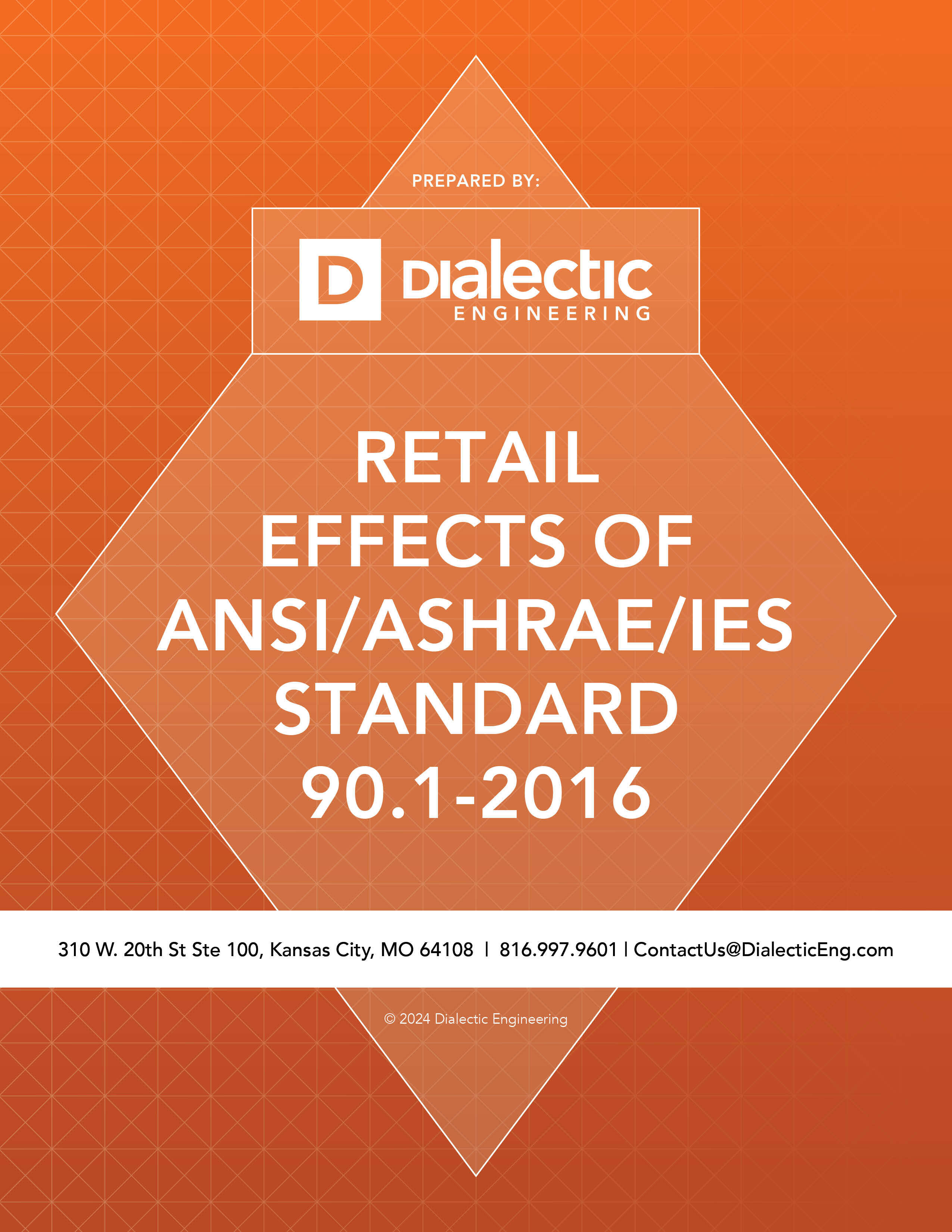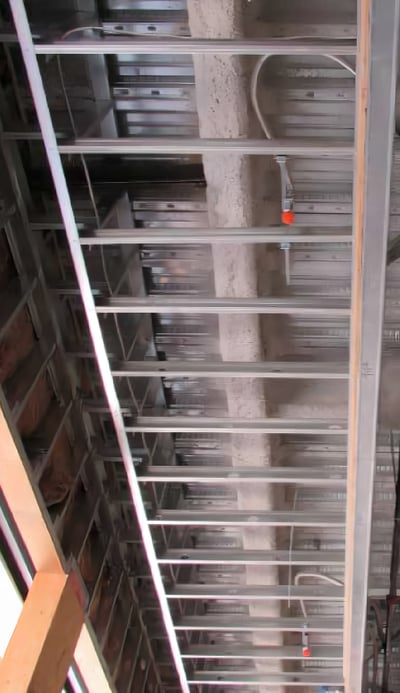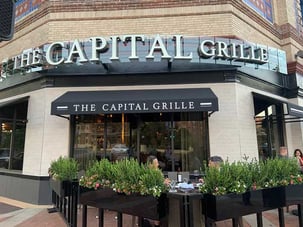10 min read
Retail Effects of ANSI/ASHRAE/IES Standard 90.1-2016
Dialectic Engineering
May 12, 2017 5:01:55 AM

What's Inside?
ANSI/ASHRAE/IES 90.1-2016 – Energy Standard for Buildings Except Low-Rise Residential Buildings replaces the 2013 version. The 2013 version included several changes that will have a substantial effect on remodel and new-construction retail projects.
These changes affect building envelope, HVAC systems, indoor lighting and lighting controls, and exterior lighting. This report identifies those changes in the standard that have the largest effect on retail construction.
How to use this report
This is not a comprehensive analysis of all the changes to ANSI/ASHRAE/IES 90.1-2016 – Energy Standard for Buildings Except Low-Rise Residential Buildings. Rather, it serves as a guide to identify those items that we believe may cause the highest cost and/or largest fundamental changes to national retail client prototypes and standards. When appropriate, commentary on the changes for retailers is included.
Want commercial insights? Check out our blog:
BUILDING ENVELOPE
Vestibules
Section 5.4.3.4 of the standard requires vestibules for “building entrances that separate conditioned space from the exterior.” The vestibule requirement is excluded from the following:
- Building entrances in buildings located in Climate Zones 1 and 2
- Building entrances in buildings located in Climate Zone 3 as long as they are less than 4 stories above grade and less than 10,000 square feet of conditioned floor area
- Building entrances with revolving doors
- Doors that open directly from a space less than 3,000 square feet and is separate from the building entrance
Glazing + Fenestration
Prescriptive requirements for glass windows and skylights (fenestration) vary depending on the climate zone. U-factor, Solar Heat Gain Coefficient (SHGC), and Visible Transmittance/ SHGC ratio (VT/SHGC) are regulated by the standard, and the requirements can be found in Tables 5.5-0 through 5.5-8.
Section 5.4.3.4 of the standard requires vestibules for “building entrances that separate conditioned space from the exterior.”
HVAC
Climate Zone Changes
The 2016 standard has added climate zone 0A and 0B which are designated as extremely hot and humid (0A) and extremely hot and dry (0B). No locations within the United States or Canada fall into either of these new climate zones.
Prescriptive Threshold for Economizers
Section 6.5.1 of the 2016 standard continues to require economizers on all units sized for 54,000 BTUH (4.5 tons) and larger in all climate zones except 0A, 0B, 1A and 1B. For these climate zones, there is no economizer requirement.
Economizer Fault Detection
Section 6.4.3.12 was added to the 2016 Standard. Economizer fault detection and diagnostics (FDD) is now mandatory for all newly installed, air-cooled, direct expansion HVAC units equipped with economizers.
Permanently installed temperature sensors for outdoor air, supply air and return air (where required for economizer control) are required to monitor economizer operation.
Controllers shall be capable of displaying the value of each sensor and indicating status as follows:
- Free cooling available
- Economizer enabled
- Compressor enabled
- Heating enabled (if system is capable of heating)
- Mixed air low limit cycle active
The FDD system shall detect the following faults:
- Air temperature sensor failure/fault
- Not economizing when unit should be economizing
- Economizing when unit should not be economizing
- Damper not modulating
- Excess outdoor air
In addition, the FDD system shall allow manual initiation of each operating mode so that the operation of compressors, economizers, fans and heating can be independently tested and verified.
The system must be configured to report faults to a fault-management application, direct digital control system accessible by operating or service personnel, or by alarming locally on zone thermostats.
Modulating Cooling Capacity for HVAC Systems with Economizers
Section 6.5.1.3 of the 2016 standard continues to require direct expansion (DX) HVAC equipment to have the capability to stage or modulate cooling capacity. Although requirements vary depending on equipment capacity, a minimum of two stages are required for units over 5 tons of capacity.
Fortunately, most of the major packaged rooftop unit manufacturers currently have equipment available that meet this requirement.
HVAC Equipment Efficiency
The HVAC efficiency requirements that were implemented in the 2013 standard have remained the same in the 2016 standard. Packaged air-cooled HVAC equipment from 5.4 to 11.1 ton capacities must have a minimum energy efficiency rating (EER) of 11.2, and minimum integrated energy efficiency rating (IEER) of 12.9.
Packaged air-cooled HVAC equipment from 11.2 to 19.9 ton capacities must have a minimum EER of 11.0, and minimum IEER of 12.4. Packaged air cooled HVAC equipment from 20 to 63 ton capacities must have a minimum EER of 10.0, and minimum IEER of 11.6. EER and IEER values listed above are for units with electric heat or no heat.
For units with other heating types, the EER and IEER requirements are 0.2 less than what is listed above. More detailed information about minimum efficiencies for various HVAC and refrigeration equipment types can be found in Tables 6.8.1-1 through 6.8.1-16 of the standard.

Variable Airflow Fan Control
Section 6.5.3.2.1 of the 2016 standard continues to require that all direct expansion (DX) HVAC equipment have variable supply fan airflow for units with a capacity equal to or greater than 65,000 BTUH (5.4 tons).
In addition, the 2016 standard continues to require that all chilled-water air-handling units with a ¼ horsepower fan motor or larger also have variable supply fan airflow. Either twospeed or variable-speed fans are allowed.
Heating and Cooling in Vestibules
While the heating limitations in vestibules have remained the same in the 2016 standard, section 6.4.3.9 added cooling limitations. Heating in vestibules shall include automatic controls that shut off the heating system when the outside air temperature is above 45°F.
Vestibule heating and cooling systems shall be controlled by a thermostat located in the vestibule, capable of limiting heating to a maximum of 60°F, and limiting cooling to a minimum of 85°F.
Demand Controlled Ventilation
Section 6.4.3.8 of the 2016 standard continues to require demand-controlled ventilation for systems with air-side economizers, modulating control of the OA damper, or OA > 3,000 CFM which serve spaces larger than 500 square feet and occupant load ≥ 25 people per 1,000 square feet.

Exhaust Air Energy Recovery
Section 6.5.6.1 of the 2016 standard continues to require that ventilation systems have an energy recovery system. The requirement for exhaust air energy recovery is climate zone dependent and is based on the design supply fan airflow rate and percentage of outdoor air being introduced through the system.
The standard includes two tables that list when exhaust air energy recovery is required. Table 6.5.6.1-1 is for systems that operate less than 8,000 hours per year and Table 6.5.6.1-2 is for systems that operate 8,000 hours or more per year.
Duct Insulation
The 2016 standard includes revisions to the requirements for duct insulation in Table 6.8.2:
Exterior ductwork now includes ductwork in attics above insulated ceilings, parking garages and crawl spaces.
Exterior ductwork insulation requirement increased from R-6 to R-8 in climate zones 0 to 4, and increased from R-8 to R-12 in climate zones 5 to 8.
Insulation requirement for ductwork located in unconditioned spaces or ductwork that is buried has increased from R-3.5 to R-6 in all climate zones. • Supply ducts in indirectly conditioned spaces (return air plenums) are now required to be insulated with R-1.9 in lieu of no requirement.
SUBSCRIBE FOR MORE
PLUMBING
Temperature Maintenance Control
Section 7.4.4.2 of the standard has not changed. It requires hot water temperature maintenance controls, such as circulation pumps or heat trace, to have automatic time switches or controls so that the system can be switched off during extended periods when hot water is not required.
Outlet Temperature Controls
The 2013 standard section 7.4.4.3 has not changed. It requires temperature controls to limit the temperature of water delivered to lavatory faucets in public restrooms to 110°F.
Circulating Pump Controls
Section 7.4.4.4 of the standard requires that recirculation pumps used to maintain storage tank water temperature be equipped with controls limiting operation from the start of the heating cycle to a maximum of five minutes after the end of the heating cycle.
Outlet Temperature Controls
The 2013 standard, section 7.4.4.3 has not changed. It requires temperature controls to limit the temperature of water delivered to lavatory faucets in public restrooms to 110°F.
LIGHTING
Lighting Alterations
Section 9.1.2 has been reorganized to clarify the requirements for lighting alterations. The main update to this section is the exception for partial lighting alterations that changed the threshold from 10% to 20%.
The 2016 standard allows spaces that are altering less than 20% of the “connected lighting load” to not meet the 2016 lighting power density (LPD) or controls requirement, as long as the alteration does not increase the installed lighting power.
Interior Lighting Power
As with all energy codes, there is a requirement to limit the LPD in a building. The standard provides for two methods for calculating the allowed lighting power. The “Building Area Method” is a simplified method for demonstrating compliance, and the “Space by Space Method” affords more flexibility.
Allowed lighting power tends to decrease for each code cycle as lamp technology improves. The 2016 update continues this trend, as many interior and exterior LPDs have decreased compared to the 2013 standard.
Notably, the allowed lighting power for sales areas using the Space by Space Method was reduced from 1.44 W/sf to 1.22 W/sf. Some fixtures are exempt from being included in the total LPD, but in the 2016 version ASHRAE has added a small caveat to make sure the application of exempted fixtures is for their intended/specific purpose.
Exempted lighting can only be removed from the overall LPD if it is “in addition to the general lighting in the area and controlled separately.” If exempted lighting is the only lighting in the area, it cannot be exempted since it is now serving as the general lighting in the space.
Additional Lighting Power
When using the Space by Space Method, the standard allows “additional lighting power” for decorative appearances or highlighting merchandise for certain space types.
This is in addition to the base lighting power allowance for the space type. Section 9.6.2 of the 2016 standard updated the formula for calculating the additional lighting power, reducing the amount of additional lighting allowed.
For any space that has lighting to be used for “decorative appearance” or for “highlighting art or exhibits,” that additional lighting cannot be more than 0.75 W/ft2 for that space.
This is a reduction of 0.25 W/ft2 from the 2013 standard. For lighting “installed in sales areas and specifically designed and directed to highlight merchandise, there is additional allowed power that can be applied depending on the product being sold. The formula for calculating the additional lighting power is as follows:
Additional lighting power allowance = 1,000 W + (Retail Area One x 0.45 W/sf) + (Retail Area Two x 0.45 W/sf) + (Retail Area Three x 1.05 W/ sf) + (Retail Area Four x 1.88 W/sf).
- Retail Area One is defined as floor area for all products not listed in Retail Areas Two, Three, or Four.
- Retail Area Two is defined as floor area used for the sale of vehicles, sporting goods and small electronics.
- Retail Area Three is defined as floor area used for the sale of furniture, clothing, cosmetics and artwork.
- Retail Area Four is defined as floor area used for the sale of jewelry, crystal and china.
Daylight Responsive Controls
Retail sales floors require automatic daylight responsive controls for top lighting (top lighting means the space has skylights or other overhead source of daylight).
The control system is required to use photocontrols to reduce general lighting in response to available daylighting by using either continuous dimming or at least one control point that is between 50% and 70% of design lighting power, a second control point that is between 20% and 40% of design lighting power, and a third control point that turns the lighting off.
The standard also has requirements for side lighting. However, 9.4.4.1 includes an exception that excludes retail spaces from automatic daylight responsive controls for side lighting.
ASHRAE is making a push toward digital lighting controls that can calibrate daylight sensors remotely. New language in the standard requires that calibration controls “shall be located no higher than 11’ 0” above the finished floor.”
Additionally, the calibration of the daylight sensor “shall not require the physical presence of a person at the sensor while the calibration is processing.”
Interior Lighting Controls
Minimum lighting control requirements are indicated in Table 9.6.1 of the 2016 standard. Control requirements are complex and vary depending on space type.
For sales areas, manual on-off control and bi-level control is required. A maximum of 2,500 square feet of lighting can be controlled by each manual control in spaces less than or equal to 10,000 square feet, and in larger spaces each manual control cannot control more than 10,000 square feet.
Bi-level lighting control requires at least one intermediate step in lighting power or continuous dimming in addition to full on and full off, with at least one intermediate step between 30% and 70% of full lighting power.
Additional controls are required to either have the lighting restricted to manual on (none of the lighting can turn on automatically), or partial automatic on (no more than 50% of the general lighting power is allowed to be automatically turned on.)
Finally, the general lighting must have either automatic full off (all lighting must automatically shut off within 20 minutes of all occupants leaving the space), or scheduled shut-off (all lighting in the space including lighting connected to emergency circuits automatically shut off when space is scheduled to be unoccupied.
Display/accent lighting and display case lighting must be controlled separately from general lighting. Exemptions have been added that any spaces with a “lighting load not exceeding 0.02 W/ft2 multiplied by the gross area of the building” does not need either form of shut-off.
An additional update applies to parking garages. ASHRAE requires luminaires within 20 feet of perimeter walls reduce the light output in response to daylight. The 2016 update now has a threshold reduction of at least 50%.
Exterior Lighting Controls
Section 9.4.1.4 of the standard requires exterior lighting to be automatically turned off when sufficient daylight is available. Building façade and landscape lighting is required to be automatically shut off between midnight or business closing, and 6 a.m. or business opening, or between times established by authority having jurisdiction.
There are other exterior lighting control requirements that apply to specific lighting and sign lighting conditions.
POWER
Automatic Receptacle Control
In the 2010 standard, ASHRAE was the first energy standard to require automatic control of receptacles. Section 8.2.4 stated that in offices and computer classrooms, “at least 50% of all 125V, 15A and 20A receptacles had to be controlled by an automatic control device.”
The receptacles had to be controlled by either:
- Timeclock
- Occupancy sensor
- A signal from a building control system
The standard hasn’t changed much except to expand the location of controlled receptacles to conference rooms, copy/printing rooms, breakrooms and individual workstations. These receptacles must be marked to differentiate them from non-controlled receptacles.

CONCLUSIONS
The ANSI/ASHRAE/IES 90.1-2013 – Energy Standard for Buildings Except for Low-Rise Residential Buildings had a substantial effect on how retailers design and construct their stores, and the 2016 standard made additional adjustments but no drastic changes.
Energy codes continue to transition from life safety to sustainability. In addition to the ASHRAE 90.1-2016, the International Green Construction Code (IGCC) and 2016 California Title 24 Part 6 are also driving transformation as they are adopted more widely by state, county, city and local governments.
In the coming years expect higher construction and design costs to be the norm. In the long term, these code changes will benefit retailers in the form of reduced operating and maintenance costs. However, for those who are used to the previous way of doing business, the effects of these changes could be shocking.
We encourage our retail clients to prepare for these code changes and start planning program design changes soon to incorporate the features of ASHRAE 90.1-2016 to streamline future project delivery and plan for the financial impact of these changes.

